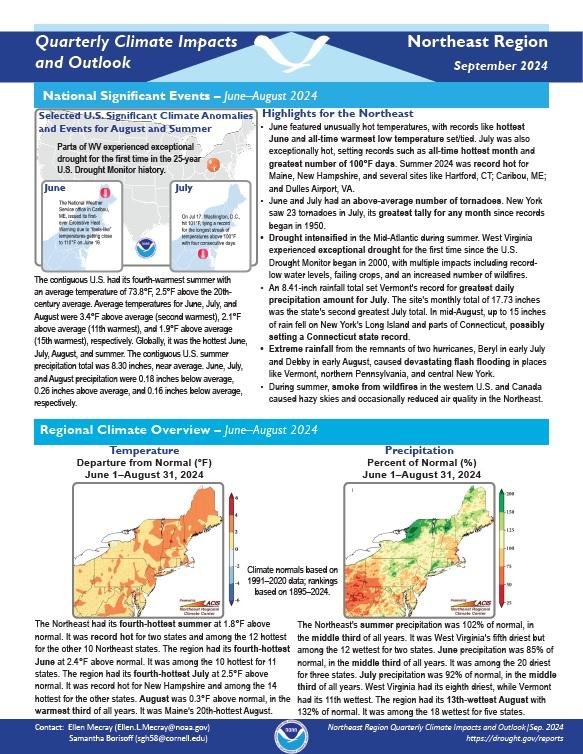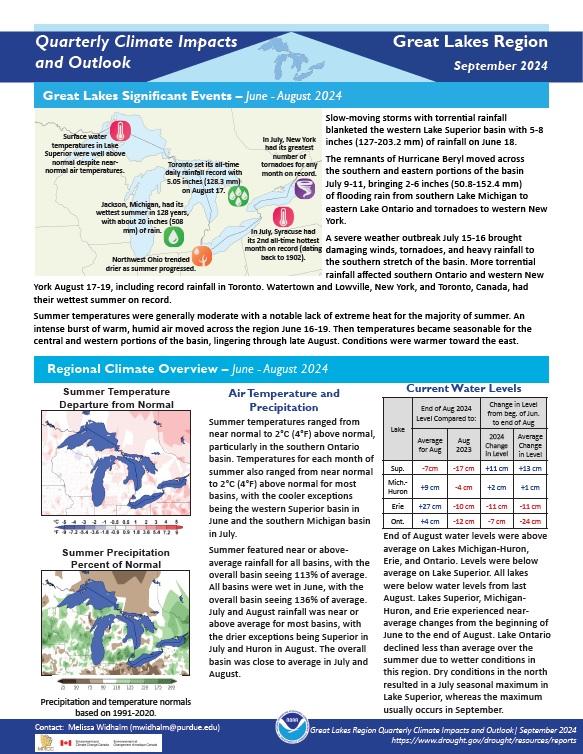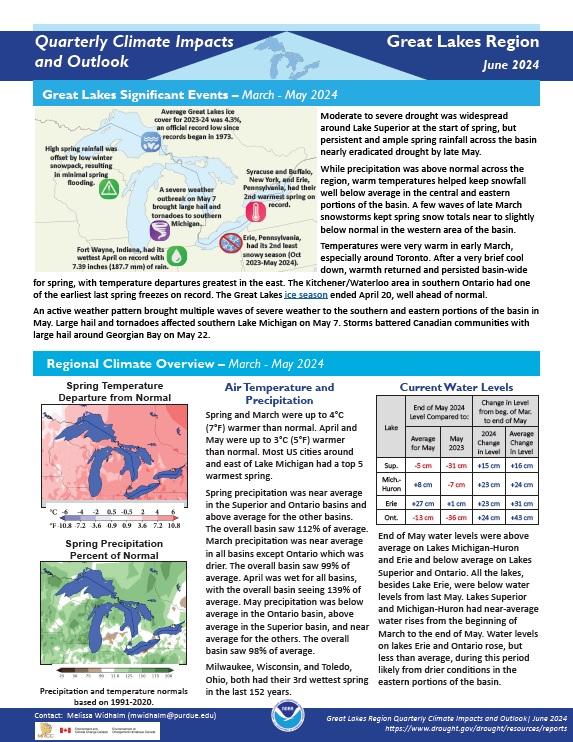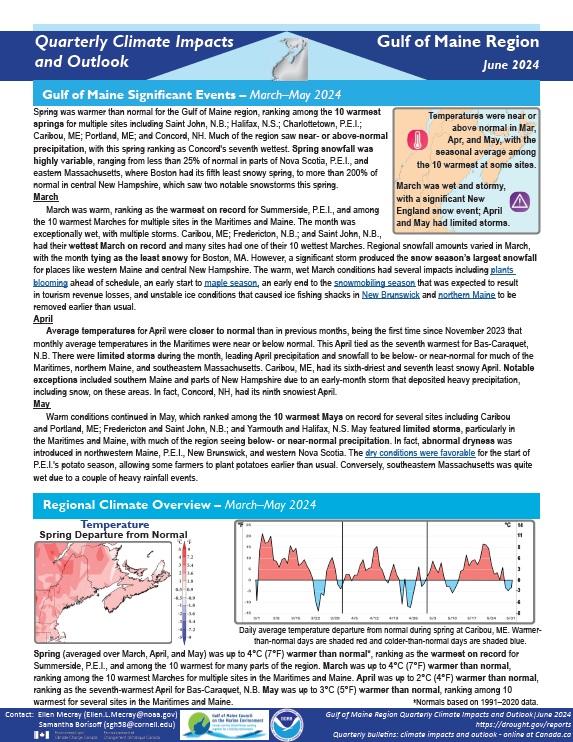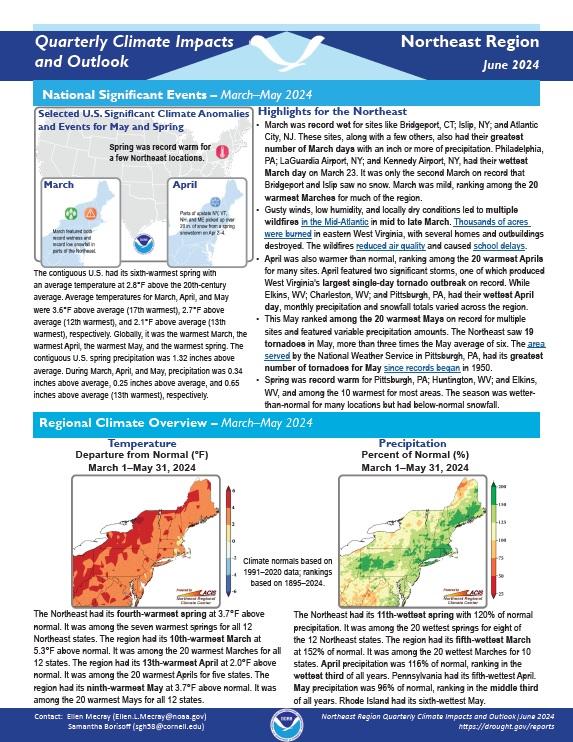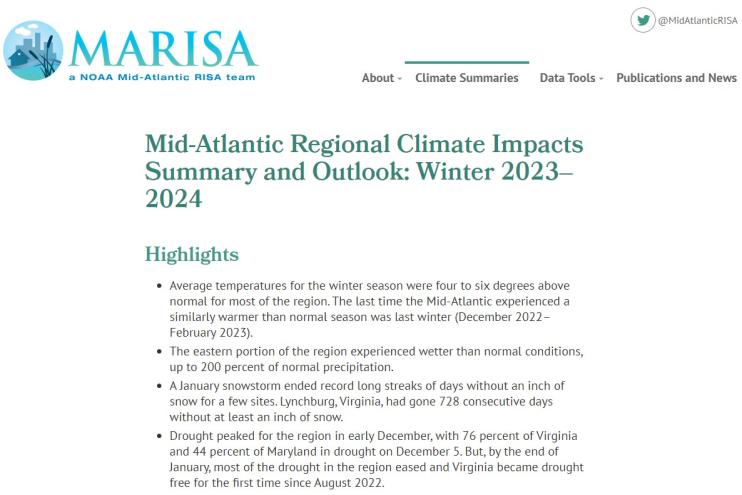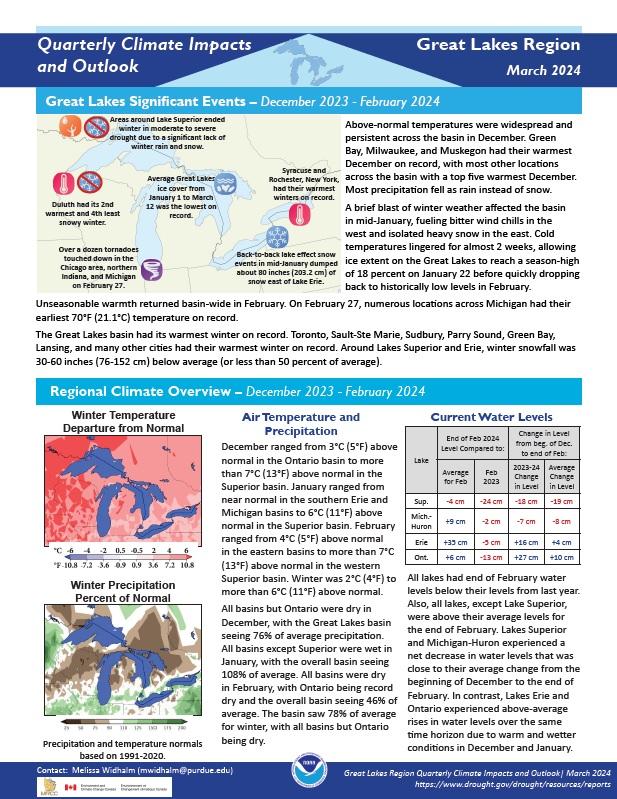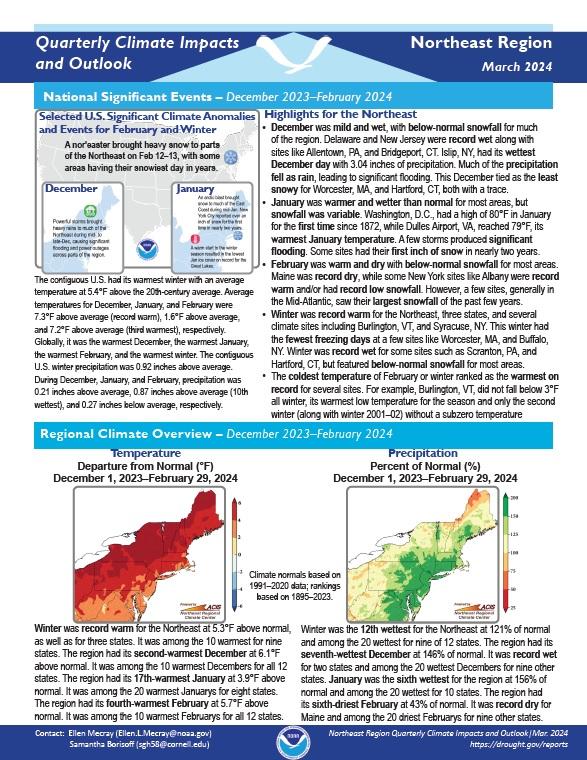Quarterly Climate Impacts and Outlook for the Northeast Region for June–August 2024. Dated September 2024.
The Northeast had its fourth-hottest summer at 1.8°F above normal. It was record hot for two states and among the 12 hottest for the other 10 Northeast states. The Northeast's summer precipitation was 102% of normal, in the middle third of all years.
Quarterly Climate Impacts and Outlook for the Great Lakes Region for June–August 2024. Dated September 2024.
Summer temperatures ranged from near normal to 2°C (4°F) above normal, particularly in the southern Ontario basin. Summer featured near- or above-average rainfall for all basins, with the overall basin seeing 113% of average.
Quarterly Climate Impacts and Outlook for the Mid-Atlantic Region for March–May 2024. Dated June 2024.
Average temperatures for the 2024 spring season were 2–4°F above normal for the majority of the region. Precipitation amounts varied across the region this spring, with some locations, particularly western Pennsylvania, experiencing greater than 150% of normal precipitation and a few areas receiving between 50% and 75% of normal spring precipitation.
Quarterly Climate Impacts and Outlook for the Great Lakes Region for March–May 2024. Dated June 2024.
Spring and March were up to 4°C (7°F) warmer than normal. April and May were up to 3°C (5°F) warmer than normal. Most U.S. cities around and east of Lake Michigan had a top 5 warmest spring. Spring precipitation was near average in the Superior and Ontario basins and above average for the other basins. The overall basin saw 112% of average precipitation.
Quarterly Climate Impacts and Outlook for the Gulf of Maine Region for March–May 2024. Dated June 2024.
Spring was up to 4°C (7°F) warmer than normal, ranking as the warmest on record for Summerside, P.E.I., and among the 10 warmest for many parts of the region. Spring precipitation ranged from 50% of normal to 175% of normal. Concord, NH, had its seventh-wettest spring.
Quarterly Climate Impacts and Outlook for the Northeast Region for March–May 2024. Dated June 2024.
The Northeast had its fourth-warmest spring at 3.7°F above normal. It was among the seven warmest springs for all 12 Northeast states. The Northeast had its 11th-wettest spring with 120% of normal precipitation. It was among the 20 wettest springs for eight of the 12 Northeast states.
Quarterly Climate Impacts and Outlook for the Mid-Atlantic Region for December 2023–February 2024. Dated April 2024.
Average temperatures for the winter season were four to six degrees above normal for most of the region. The eastern portion of the region experienced wetter than normal conditions, up to 200 percent of normal precipitation.
Quarterly Climate Impacts and Outlook for the Great Lakes Region for December 2023–February 2024. Dated March 2024.
Winter was 2°C (4°F) to more than 6°C (11°F) above normal. The basin saw 78% of average precipitation for winter, with all basins but Ontario being dry.
Quarterly Climate Impacts and Outlook for the Gulf of Maine Region for December 2023–February 2024. Dated March 2024.
Winter was up to 5°C (9°F) warmer than normal, ranking as the warmest on record for a few sites like Caribou, Maine, and Fredericton, N.B., and among the 10 warmest for multiple areas. Precipitation for winter ranged from 50% of normal to more than 200% of normal.
Quarterly Climate Impacts and Outlook for the Northeast Region for December 2023–February 2024. Dated March 2024.
Winter was record warm for the Northeast at 5.3°F above normal, as well as for three states. It was among the 10 warmest for nine states. Winter was the 12th wettest for the Northeast at 121% of normal and among the 20 wettest for nine of 12 states.


